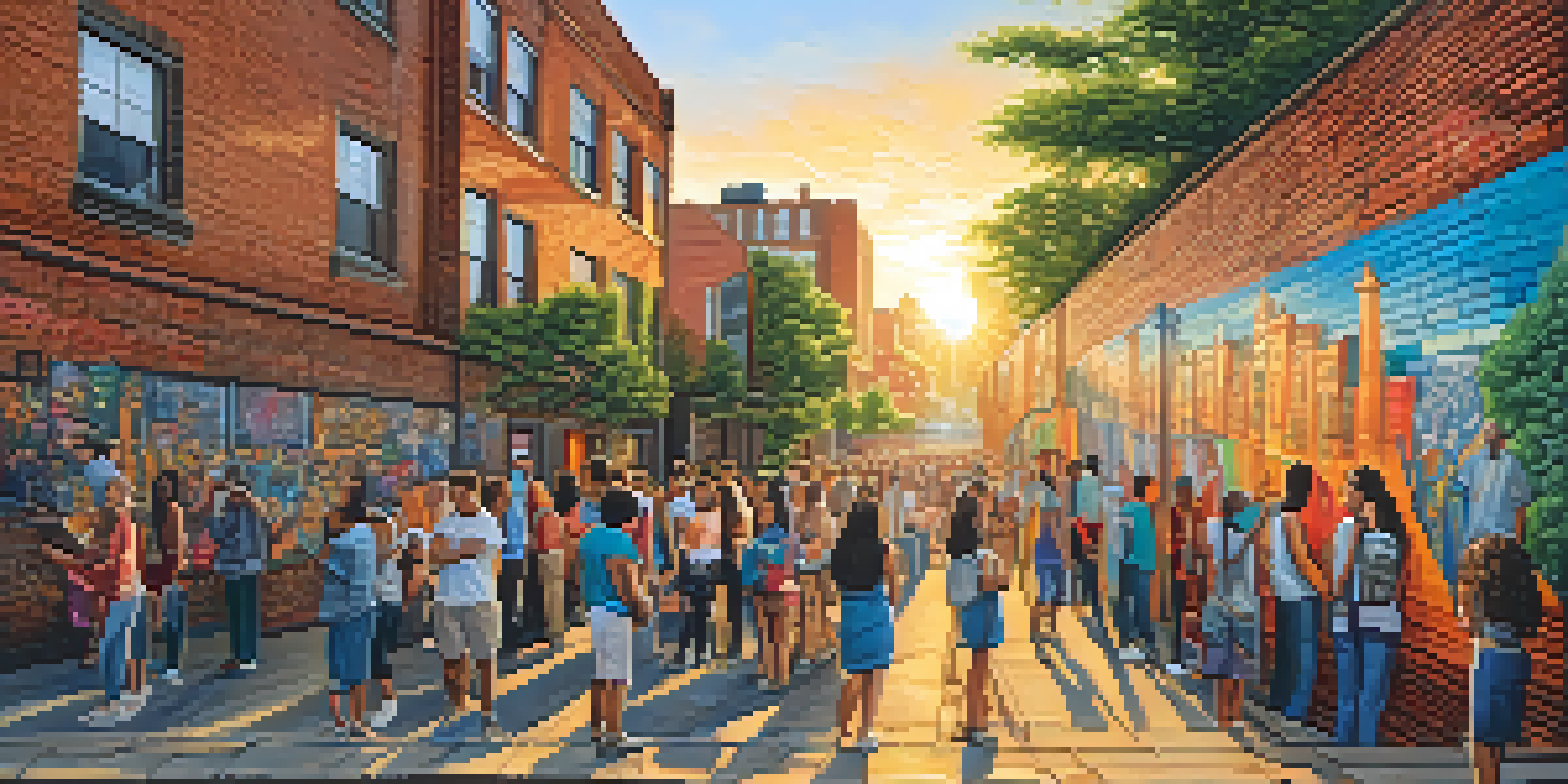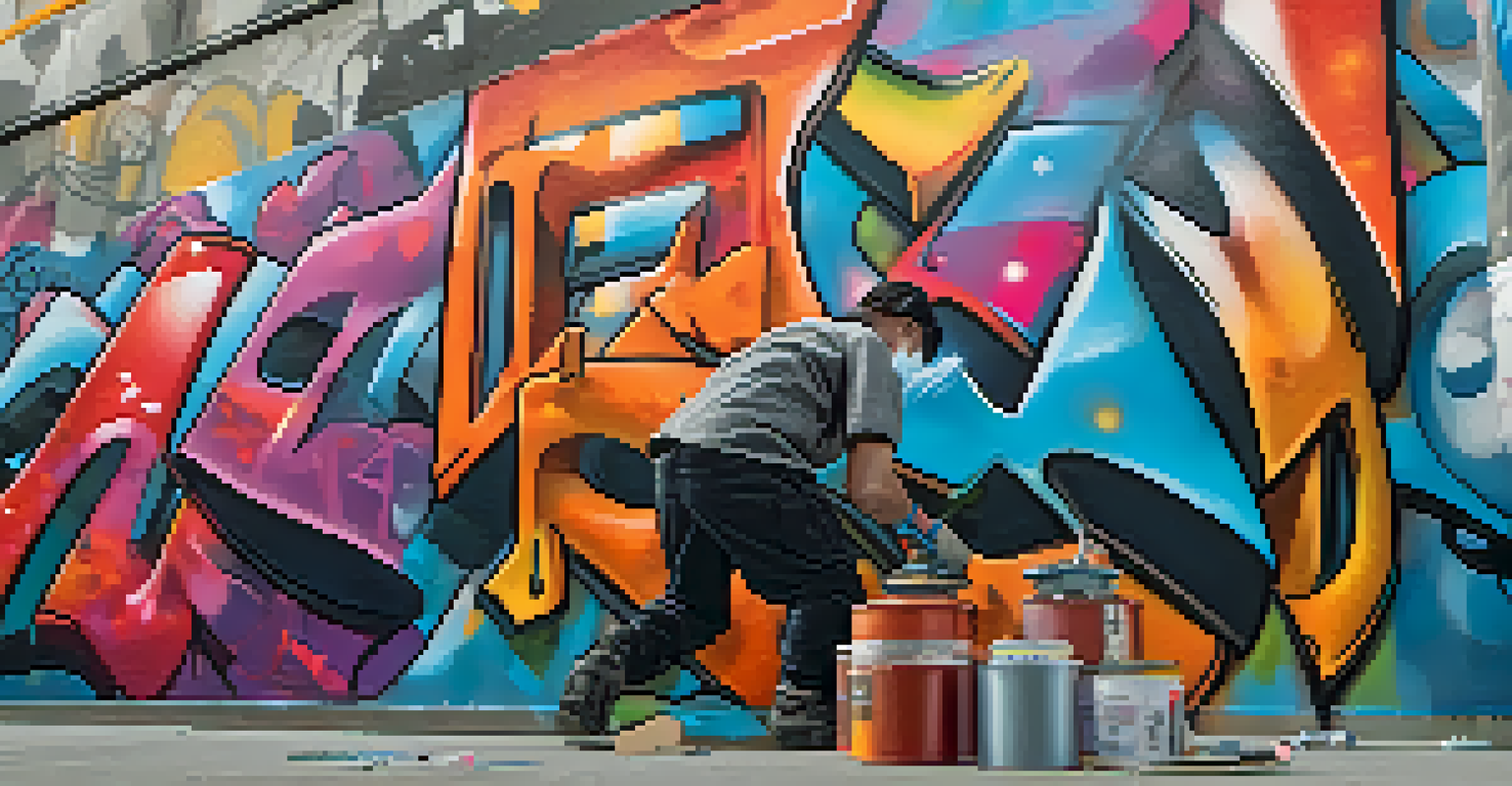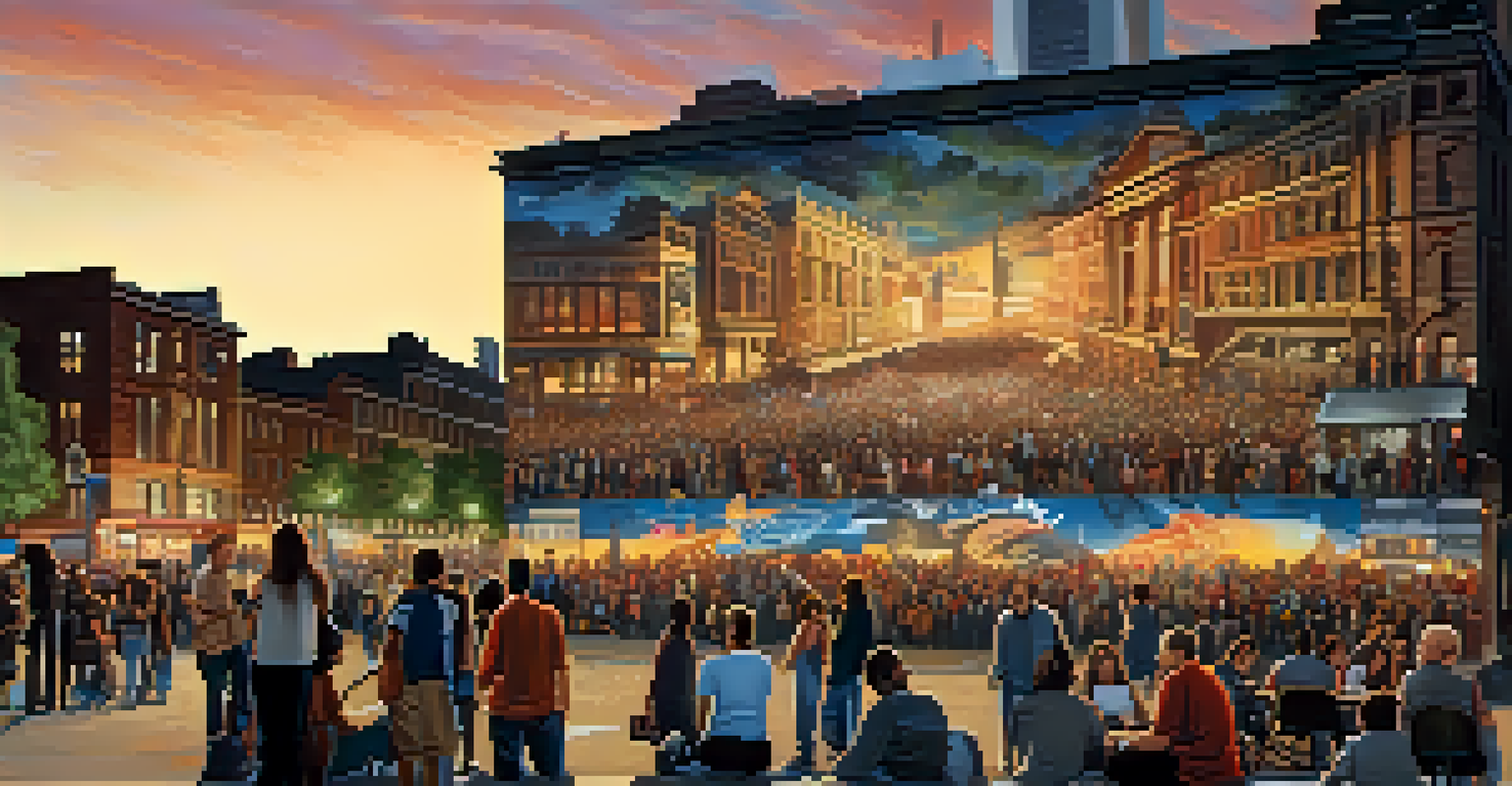The Cultural Impact of Graffiti as Urban Art

Graffiti's Evolution: From Vandalism to Art
Graffiti has come a long way from its origins in the streets, often seen as vandalism. Over the years, it has evolved into a recognized form of urban art, showcasing the talents of artists who use walls as their canvases. This transformation reflects broader societal changes, where what was once dismissed is now celebrated and appreciated.
Art is not a mirror held up to reality, but a hammer with which to shape it.
Many cities now embrace graffiti as a legitimate art form, organizing events and festivals that highlight street artists. This shift not only enhances the urban landscape but also fosters a sense of community pride and identity. As graffiti finds its place in galleries and museums, it challenges our perceptions of art and its boundaries.
For example, cities like Berlin and New York have become famous for their vibrant street art scenes, attracting tourists and art lovers alike. This acceptance has also led to discussions about the meaning and purpose of public art, igniting debates about ownership, expression, and cultural significance.
The Voice of the Streets: Social and Political Commentary
Graffiti often serves as a powerful medium for social and political commentary, giving voice to marginalized communities. Artists use their work to address issues like inequality, racism, and environmental concerns, making their messages resonate within the urban fabric. This raw form of expression can provoke thought and inspire action among viewers.

Consider the famous works of artists like Banksy, whose pieces often critique societal norms and political systems. His art ignites conversations about complex issues, demonstrating how graffiti can transcend mere decoration and become a catalyst for change. This aspect of graffiti emphasizes its role as a form of protest and a tool for advocacy.
Graffiti as Urban Art
Graffiti has transformed from being viewed as vandalism to a celebrated form of urban art, enhancing community identity and pride.
Through the lens of graffiti, we can witness the pulse of society at any given moment. The messages conveyed through these artworks can reflect the struggles and triumphs of a community, making them an invaluable historical record of urban life.
Artistic Techniques: The Craft Behind Graffiti
At first glance, graffiti may seem spontaneous and chaotic, but there's a notable level of skill and technique involved. Artists often employ a variety of methods, including stencils, spray paint, and even wheat pasting, to create their masterpieces. Understanding these techniques can deepen our appreciation for the craft behind urban art.
The medium is the message.
For instance, the use of color, shape, and form can convey different emotions and messages. Some artists are adept at creating intricate murals that tell a story, while others may focus on bold lettering that captures attention. This diversity in style contributes to the ever-evolving landscape of graffiti, making it a dynamic art form.
Moreover, the environment plays a crucial role in the creation process. Artists often adapt their techniques to suit the location and materials available, showcasing their creativity and resourcefulness. This adaptability enhances the connection between the artist and their surroundings, making the artwork an integral part of the urban experience.
Graffiti and Gentrification: A Double-Edged Sword
As cities undergo gentrification, graffiti often finds itself at a crossroads. On one hand, it can beautify neighborhoods and attract tourists, contributing to local economies. On the other hand, the presence of street art can signal the start of a neighborhood's transformation, leading to rising rents and the displacement of long-time residents.
This duality raises important questions about the role of graffiti in urban development. Are artists inadvertently contributing to the very changes that threaten their communities? Or can graffiti serve as a form of resistance against gentrification, allowing artists to reclaim space and voice within their neighborhoods?
Social Commentary Through Art
Graffiti serves as a powerful medium for social and political commentary, giving voice to marginalized communities and sparking important conversations.
For example, in areas like Williamsburg in Brooklyn, muralists have created stunning pieces that celebrate local culture while simultaneously drawing attention to the challenges faced by residents. This nuance highlights the complex relationship between graffiti, community identity, and socioeconomic change.
Cultural Exchange: Global Influences in Graffiti
Graffiti is not confined to any one culture or region; it is a global phenomenon that reflects cultural exchange and diversity. Artists from different backgrounds bring their unique perspectives and styles to the medium, enriching the overall dialogue within urban art. This cross-pollination of ideas fosters creativity and innovation.
For instance, the influence of hip-hop culture has shaped graffiti styles around the world, from the vibrant murals of Latin America to the intricate designs seen in Southeast Asia. Each region adds its own flavor, creating a rich tapestry of artistic expression that speaks to local histories and experiences.
Moreover, global events often inspire graffiti artists to comment on shared issues, such as climate change or human rights. This interconnectedness showcases the power of art to bridge cultural divides and spark conversations that resonate across borders.
The Role of Technology in Modern Graffiti
Technology has revolutionized the way graffiti artists create and share their work. Digital tools allow for experimentation with designs and techniques before they hit the streets, providing artists with greater creative freedom. This integration of technology has opened up new possibilities for expression and collaboration.
Social media platforms enable artists to showcase their work to a global audience, gaining recognition and building communities online. This visibility can lead to opportunities that were once reserved for traditional artists, blurring the lines between street art and the mainstream art world.
Technology's Impact on Graffiti
Modern technology has revolutionized graffiti creation and sharing, allowing artists to experiment and connect with a global audience like never before.
Additionally, augmented reality (AR) is now being used to bring static graffiti to life, creating immersive experiences for viewers. This technological innovation highlights the potential for graffiti to evolve continuously, ensuring it remains relevant in an ever-changing urban landscape.
Preserving Urban Art: Challenges and Opportunities
As graffiti gains recognition as an art form, the question of preservation arises. Unlike traditional art that can be housed in galleries, graffiti is often ephemeral, subject to removal or alteration. This transient nature raises concerns about how to honor and preserve the cultural significance of urban art.
Some cities have implemented programs to protect notable murals and street art, recognizing their value as part of the community's identity. Initiatives like these aim to strike a balance between urban development and the preservation of artistic expression, ensuring that the stories told through graffiti endure.

However, this also poses challenges, as artists may feel their work is being commodified or sanitized. The ongoing dialogue about preservation reflects the complexities of graffiti's place within urban culture, emphasizing the need for inclusive approaches that respect both the artists and the communities they represent.